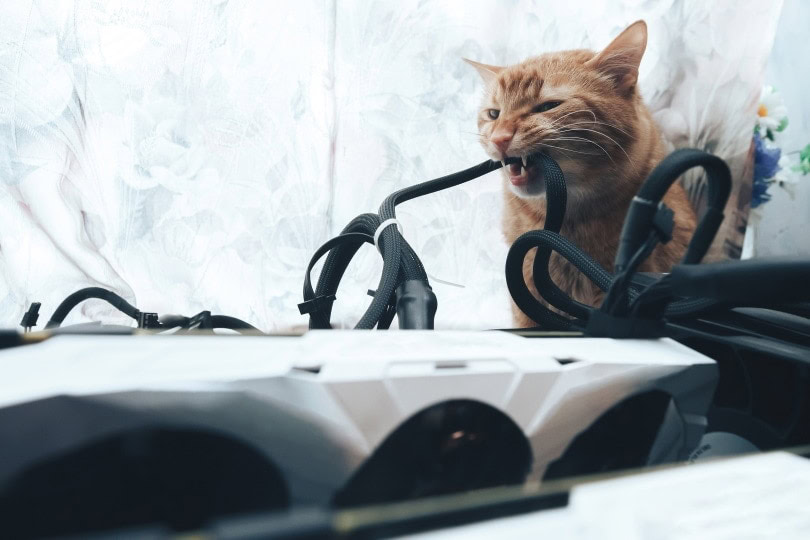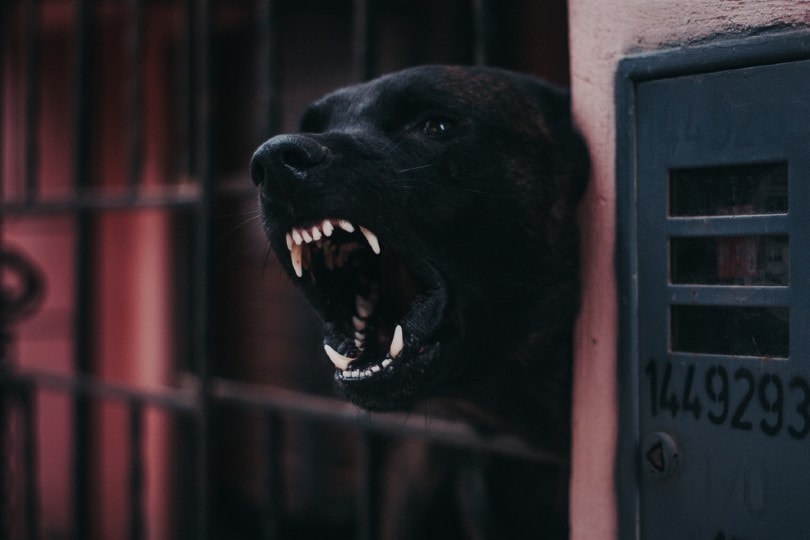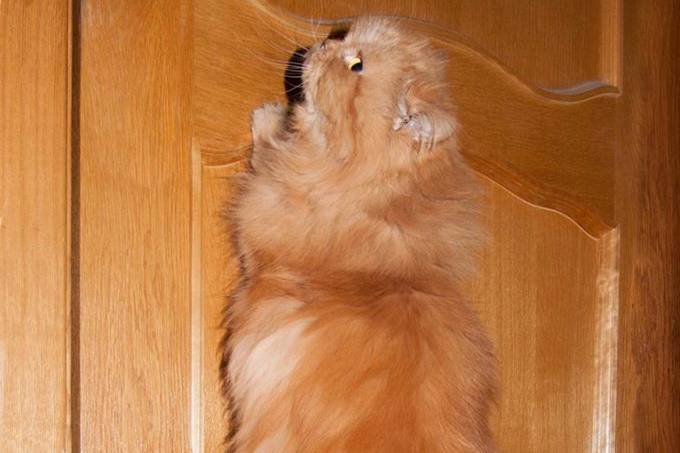VET APPROVED

The information is current and up-to-date in accordance with the latest veterinarian research.
Learn more »Click to Skip Ahead
Suppose that after a long day of work, you settle into your new reclining couch, press the button to elevate your feet, and…nothing happens. You investigate the situation and find that your agile feline friend has slithered under the couch and chewed the power cord to your recliner! Thankfully, your cat seems uninjured, but now you’re stuck with an annoying situation. Who knows if your kitty will be so lucky next time?
Chewing electrical cords is not only expensive and troublesome for cat owners but can also be extremely dangerous for the cats themselves. If your cat has developed this worrying habit, here are seven proven methods to stop your cat from chewing electrical cords.

The 7 Ways to Prevent Your Cat From Chewing Electrical Cords
1. Cover the Cords in Something Bad-Tasting
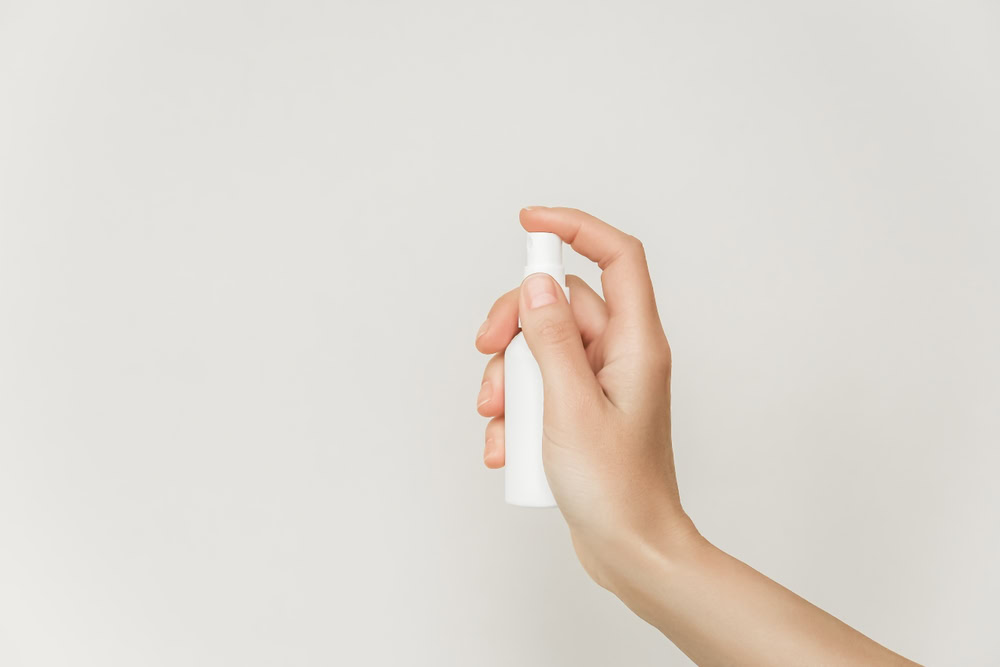
One way to deter your cat from chewing electrical cords is to smear the cords with something that tastes bad to cats. You could try a commercial anti-chew product. You could also spray a cat deterrent around where the cords lay (watch out for the socket!). This method will be trial-and-error, though.
2. Use a Cord Protector
Many different cord protection products are available at home improvement stores. These are usually hard plastic or thick rubber items that encase the electrical cords to prevent cats from damaging the actual cord. Very determined chewers may still be able to destroy some of these products but it’s worth a try to see if they work on your cat.
3. Attach Dangling Cords
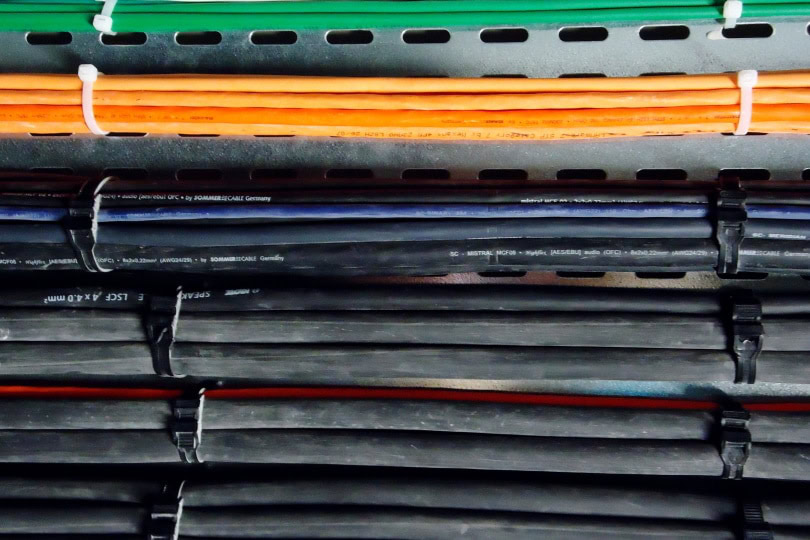
In many cases, cats chew cords because they find dangling or loose objects irresistible playthings. Fastening several loose cords together or attaching dangling cords securely to walls, floors, or furniture can make it harder for your cat to have fun and solve your chewing problem. As a bonus, you’ll also be less likely to trip on the cords!
4. Wrap Cords in Double-Sided Tape
If you don’t have a lot of cords to protect, try wrapping them in double-sided tape. Cats won’t like gnawing on the sticky surface of the tape and may look elsewhere for a chew toy. This method can be time-consuming if you’re trying to cover a lot of cord length, and the sticky tape will also attract dirt and hair.
5. Run Cords Through PVC Pipe

Another time-consuming but effective method of keeping your cords safe is to run them through thin PVC pipes. This technique requires some planning and a bit of skill to measure, cut, and secure the piping, but even the most vigorous chewing cat is unlikely to break through this protective enclosure.
6. Give Your Cat More Attention
In some cases, your cat may be chewing cords because they’re bored or trying to get your attention. To curb this behavior at the source, make time to play and interact with your cat daily. Ensure your cat has plenty of toys, scratching posts, and hiding spaces to enrich their environment.
If your cat is left alone for long periods, consider hiring a pet sitter to visit your cat during the day. Purchase an interactive pet camera to do regular check-ins with your cat from a distance, some of them even allow you to toss treats. You can also consider getting another cat if you’re able, and your cat is social towards other pets.
Regular play sessions can help your cat stay happy and healthy. Why not start the play with a fun toy like Hepper's Catnip Stick Toy? These sturdy toys are double-bagged, bite-proof, and filled with 100% organic catnip. Choose your favorite pastel color and treat your cat to hours of fun!
At PangoVet, we've admired Hepper for many years, and decided to take a controlling ownership interest so that we could benefit from the outstanding designs of this cool cat company!
7. Offer Alternative Chew Objects
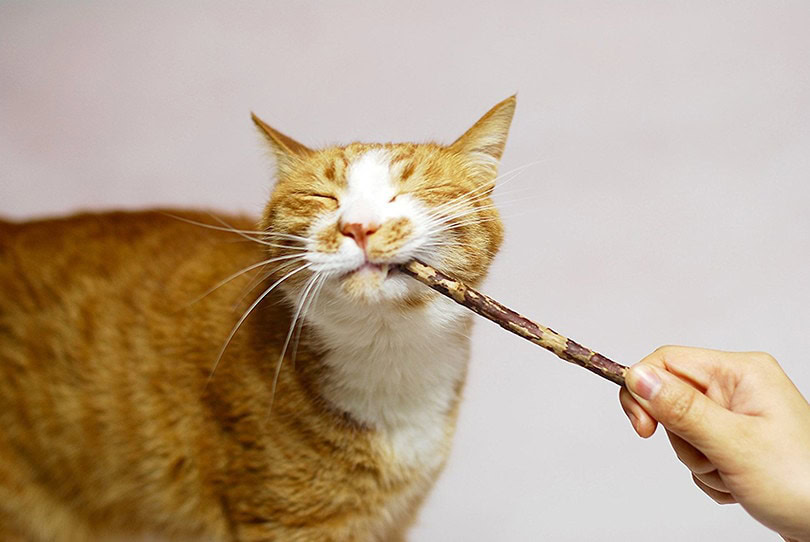
Try redirecting your cat’s chewing toward other, more appropriate objects. Some cats enjoy gnawing on cardboard, and you may be able to keep them happy by saving boxes from your latest online shopping spree. Numerous cat chew toys are also available for purchase. These toys come in various styles, materials, and sizes for casual to dedicated chewers. You can also find cat dental treats in the market. These do not replace tooth brushing but they do that allow them to chew while aiding to keep your cat’s teeth clean and their breath fresh.
 Why Chewing Electrical Cords Is Dangerous
Why Chewing Electrical Cords Is Dangerous
Chewing electrical cords can be dangerous not only to your cat but to your household as well. Chewed and damaged live electrical cords can be a legitimate fire hazard. Babies or small children could also be injured if they touch the chewed cords.
For cats, chewing electrical cords can be life-threatening. Cats can suffer tongue and mouth burns from chewing cords. They could also choke on cord parts or develop an intestinal blockage if they swallow them. Cats may even be electrocuted by the live wires. Kittens and young cats are most likely to chew cords and also be seriously hurt by doing so.
Signs of Electrical Injury in Cats
If you’re concerned your cat may have suffered an injury from chewing cords, they need to see a veterinarian as soon as possible. Electrical injuries can be both painful and dangerous. Here are some signs you may notice if your cat has hurt themselves chewing electrical cords:
- Excessive drooling
- Visible burns around the mouth
- Difficulty breathing
- Reluctance to eat
- Seizures
- Collapse
Electrocution can cause serious heart and lung damage to your cat. Don’t hesitate to call your veterinarian if you notice any of these signs.

Conclusion
Keeping your cat from chewing electrical cords may take a combination of techniques. Protect the cords to keep your cat safe as you work on redirecting their behavior or training them to avoid chewing altogether. No matter which method you pick to protect your electric cords, remember that harsh punishment is never an appropriate way to discipline your cat. If you are frustrated or unable to change your cat’s behavior, seek advice from your veterinarian or a cat behavior specialist before you give up entirely.
Related Reads:
Featured Image Credit: e-leet, Shutterstock
